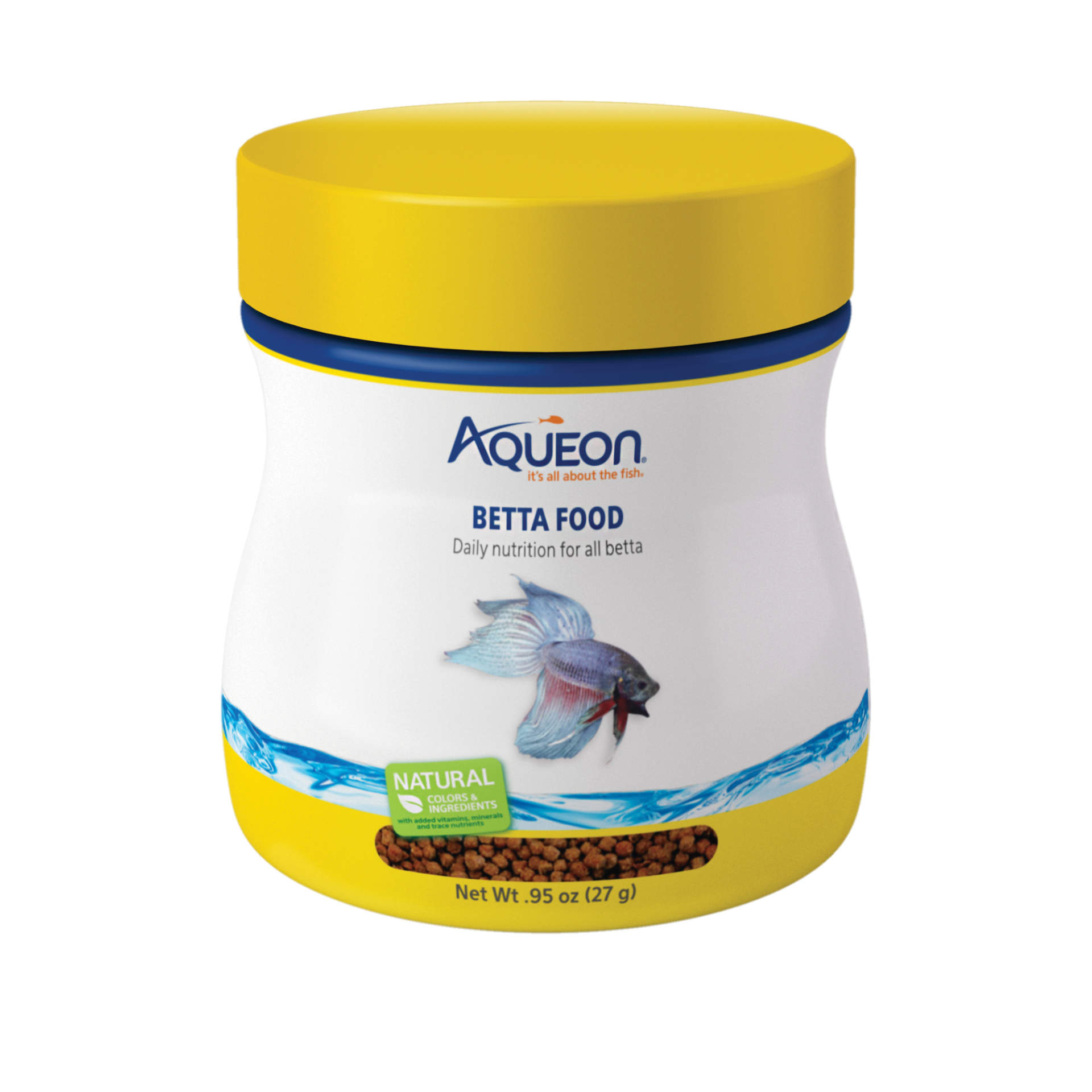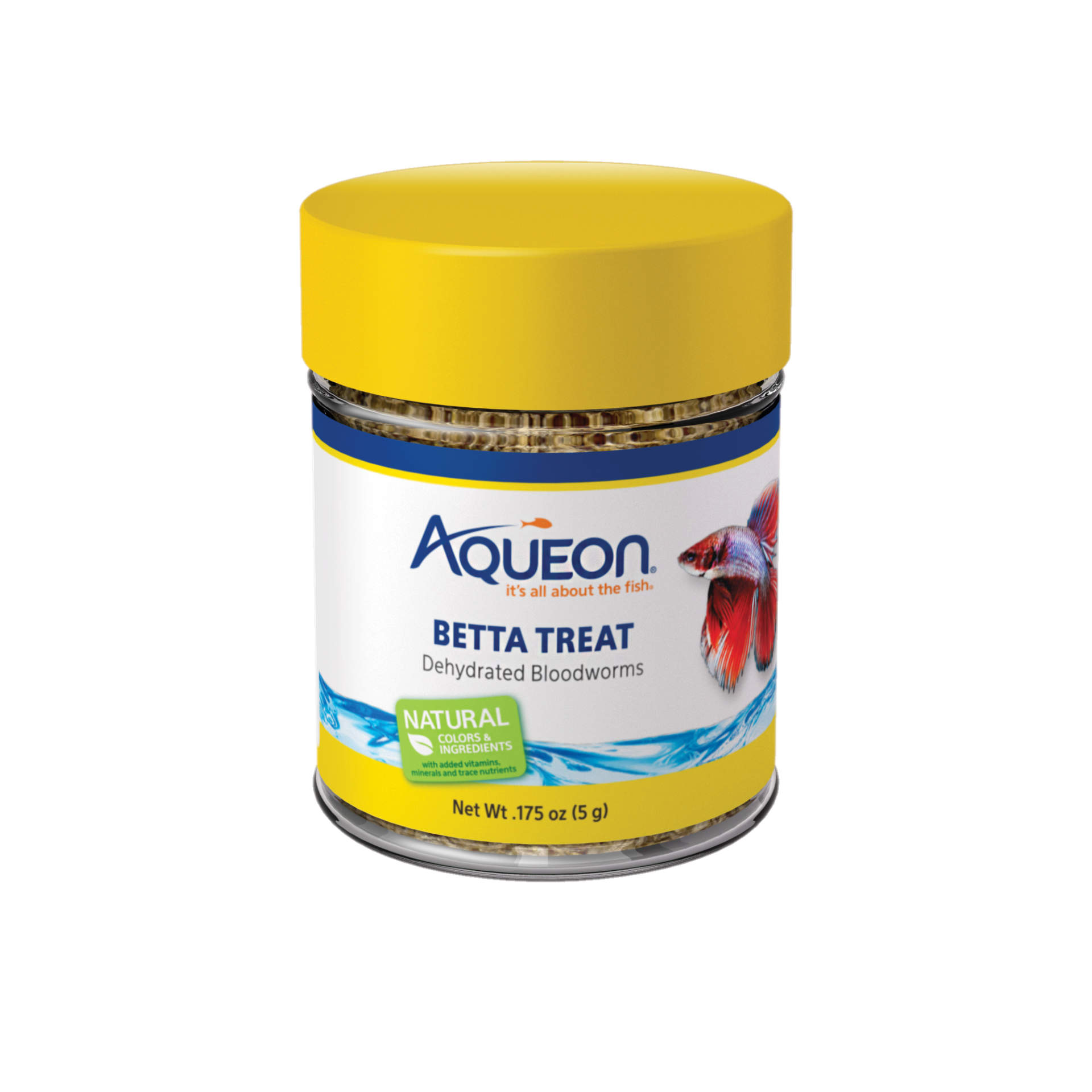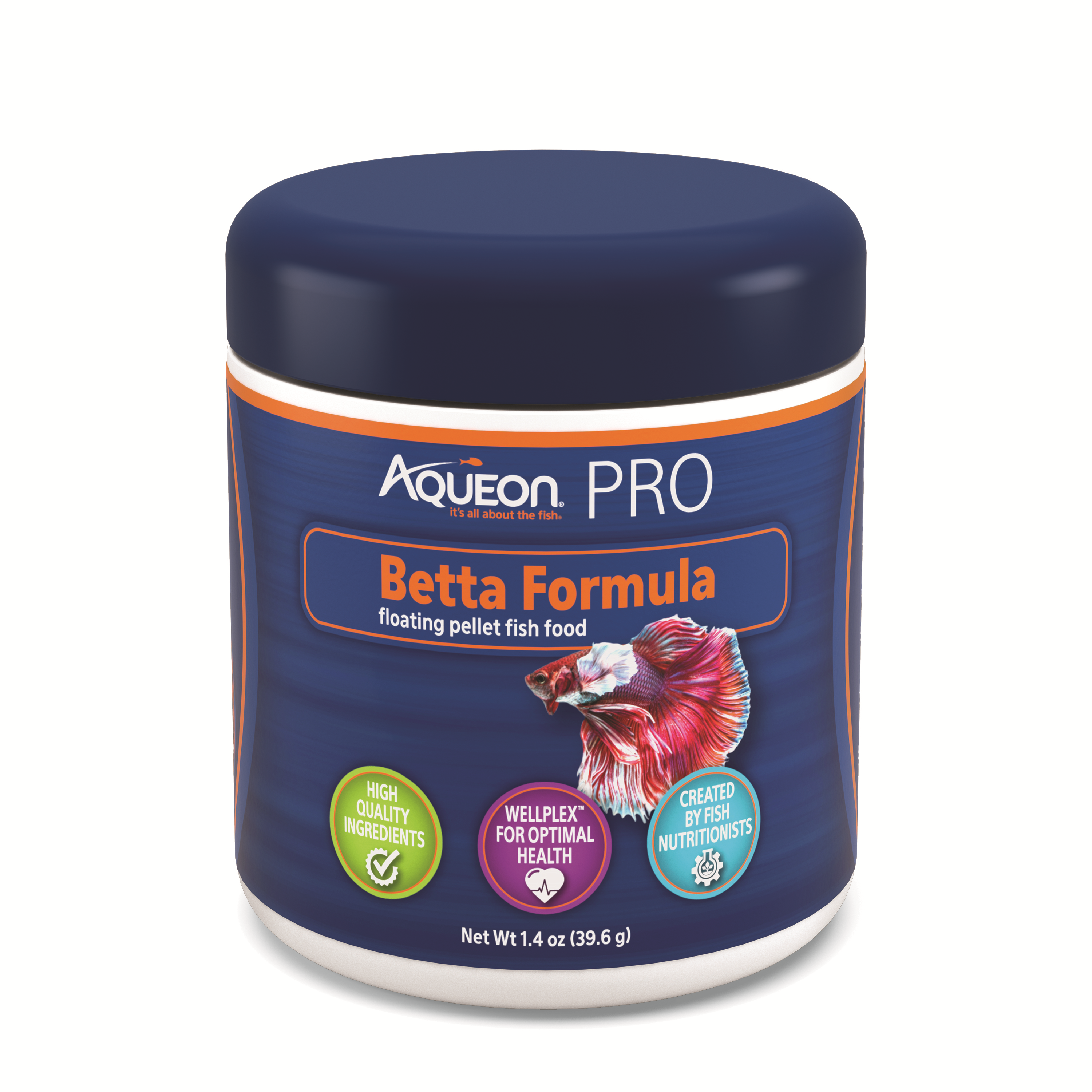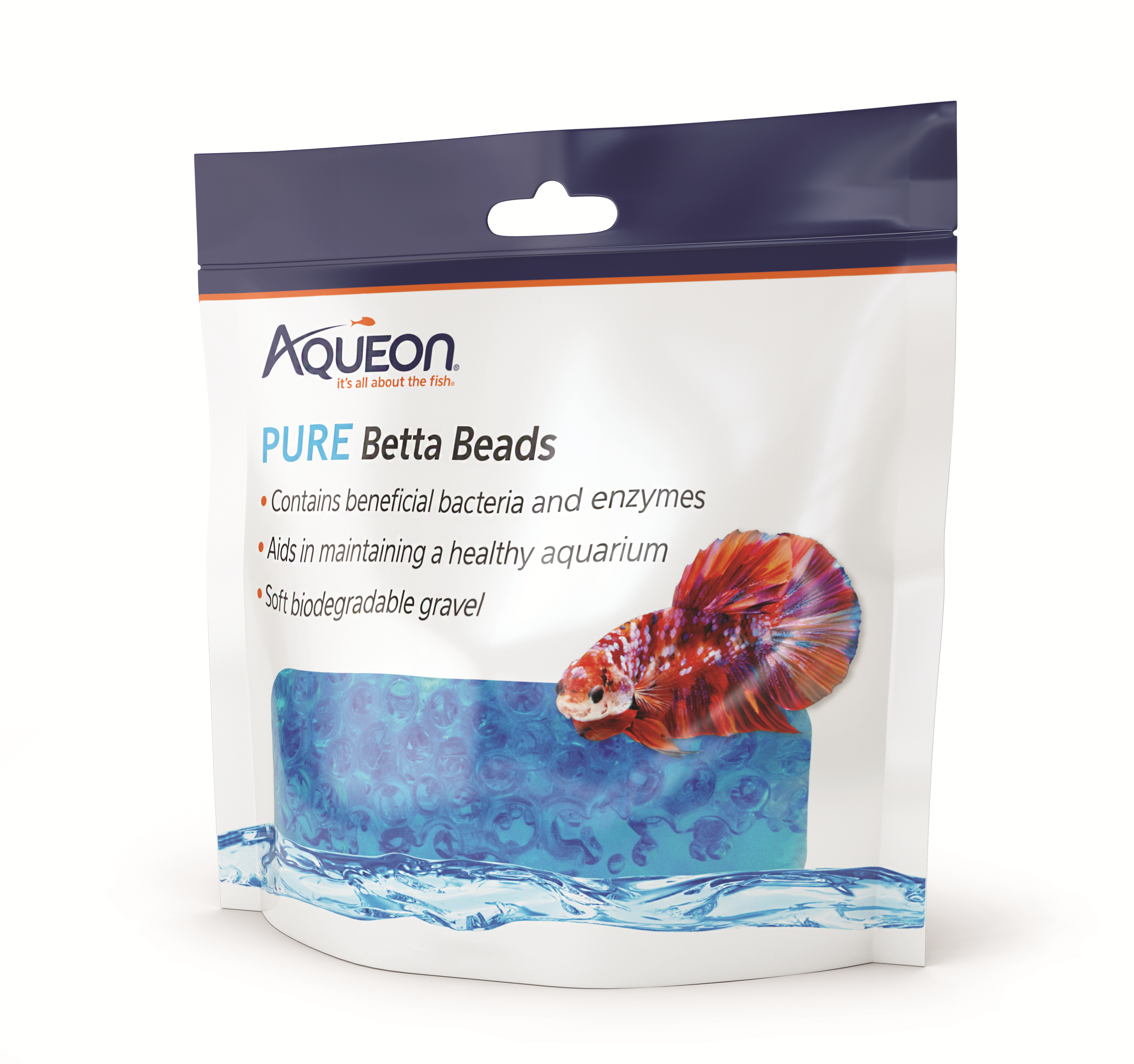The Ultimate Guide to Betta Fish
The Ultimate Guide to Betta FishCaring for a betta fish is fun and rewarding. This stunning fish makes a fabulous pet that you can teach to do simple tricks! While betta fish are hardy, they still need a great deal of tender loving care to have the happiest, healthiest life possible.
In this guide, we'll explore:
The Origin and History of Betta Fish
Setting Up the Ideal Tank Environment
The Best Decor for Your Tank
Caring for and Maintaining Your Betta Tank
Nutrition and Food for your Betta
Breeding Betta
Appropriate Tank Mates
Playing Games with Your Betta
Whether you're a new betta owner or a seasoned betta caretaker, this ultimate guide will help you better understand your fish and how to help your betta thrive.
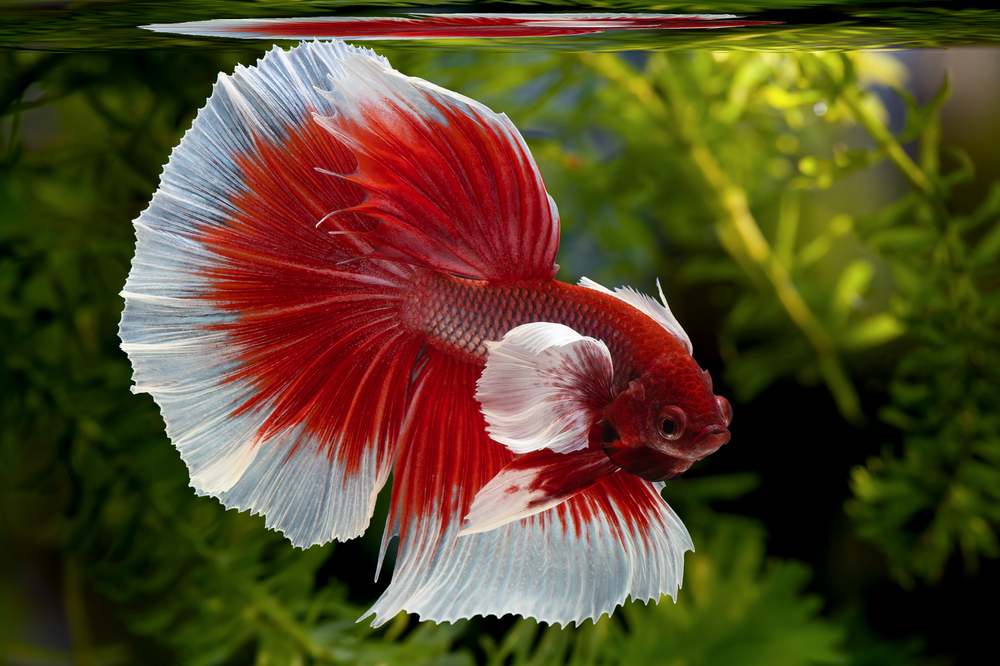
The Origin and History of the Betta Fish
Betta fish have a unique history and lineage. In the wild, they are a dull color and have short fins. But they were selectively bred over time to give us the gorgeous and colorful specimens that grace our homes today.
Betta are also known as "Siamese Fighting Fish" because they were popular pets in Thailand (then known as Siam) about 150 years ago. In the 19th century, people began betting on them in fights since they are so territorial. In 1909, they were given the name Betta splendens. It's believed the name comes from the ancient Bettah warrior tribe.
In their natural environment, betta live in shallow pools, rice paddies, and other slow-moving bodies of water in regions like Thailand, Cambodia, Laos, and Vietnam. In fact, you might be surprised to learn that there are more than 70 species of wild betta. The most common pet species is the Betta splendens.
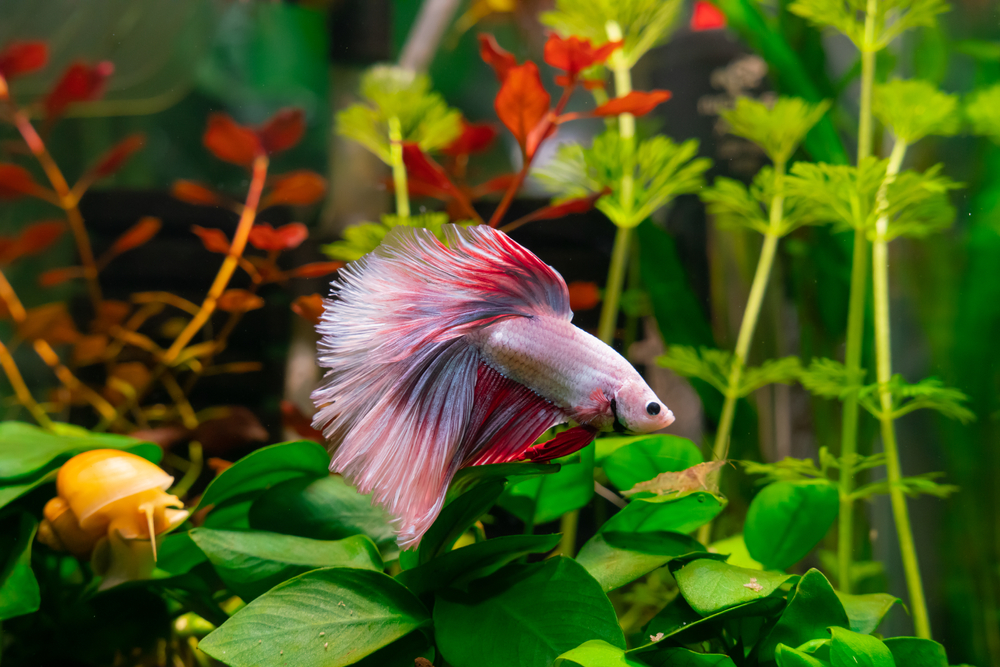
Setting up the Ideal Tank Environment
You want to make sure you set up the perfect tank and an healthy environment for your friendly fish before bringing them home. This will help ensure your betta has a long and happy life.1. Tank Size
Ideally, betta fish are happiest when they have room to spread their glorious fins. So, avoid the tiny bowls or thin vases popular in a lot of pet stores. Instead, look for a bigger tank that comes with a heater and filter.You also want a sturdy cover on your tank since betta are known jumpers and can unintentionally jump out of uncovered tanks.
2. Water Type and Temperature
Don't use tap water when filling your tank — that could be dangerous. Instead, use soft, deionized water. You can get betta water conditioners to help restore minerals and make sure the water is safe.Betta fish are tropical, so make sure their tank uses warm water. To maintain the proper temperature, use a heater that keeps the water at about 76 to 81° Fahrenheit.
3. Low-Flow Filters
Betta's beautiful fins are also very fragile. Use a low-flow filter to ensure the currents aren't so strong that they damage your pet.4. Lighting Should Mimic Day-Night Cycles
Your tank lights should mimic a natural day-night cycle so your fish can sleep. To make things easier, consider setting up a timer that ensures your tank lights automatically turn off at night and back on in the morning. Also, leaving the lights on all the time can encourage algae buildup. Six to eight hours of light is often recommended.
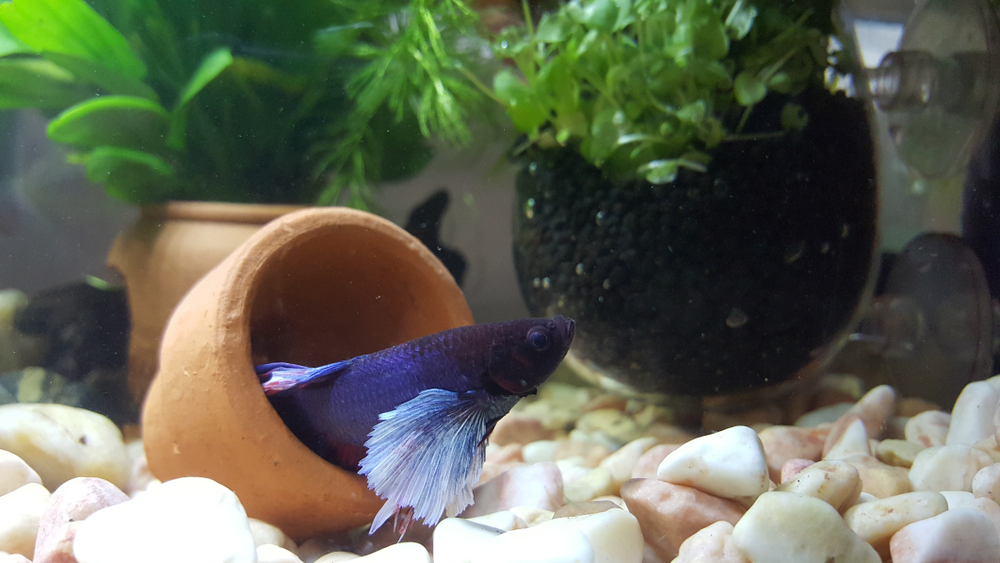
The Best Decor for Your Tank
Betta are hardy fish with a labyrinth organ that lets them process air from the surface in unfavorable environments. Despite their hardiness, their fins are fragile and can be easily injured. Be intentional when looking for decorations and plants for your tank. Choose decorations that will help your betta thrive, rest, and hide.
Avoid artificial or live plants with pointy or sharp edges that can damage your fish's fins. If using live plants, look for a soft plant like Hornwort or Naja grass. Anubias, while not a soft plant, is a good option, too. If using artificial plants, look for betta-safe silk varieties.
Use the same care when choosing other decorations, avoiding anything sharp or rough. Add a place where your betta can hide when stressed but make sure it has a large entrance that won't snag your betta's fins.
Betta also like to take lots of rest breaks since their tiny bodies use a lot of energy keeping their fancy fins afloat. Soft artificial leaves that attach to tank walls with suction cups can make nice rest stops. These are often called "betta hammocks" and make a welcome addition to any betta tank.
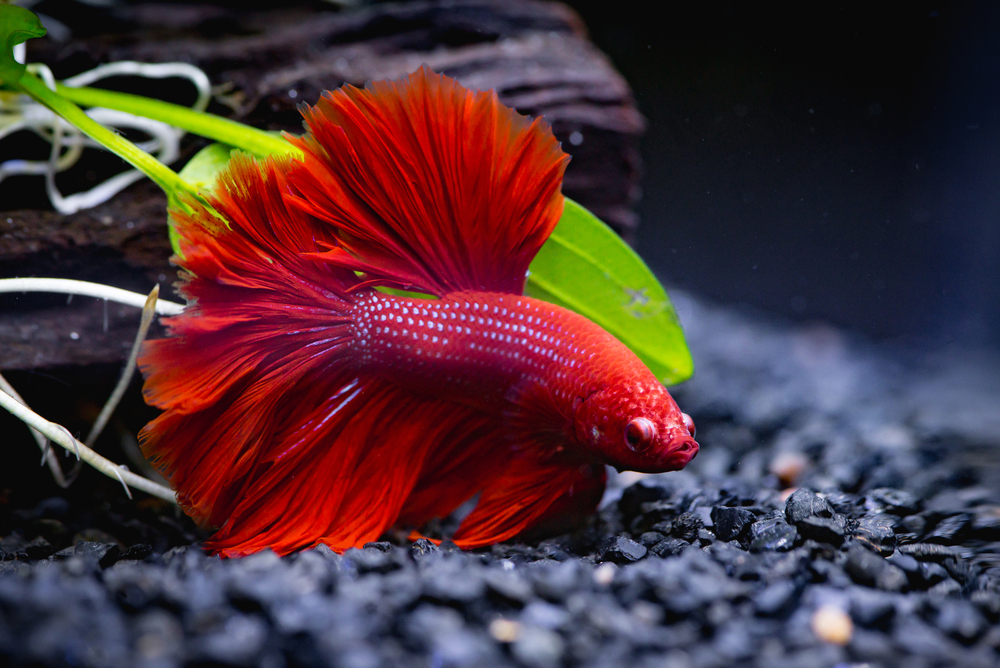
Caring for and Maintaining Your Betta Tank
Once your betta fish tank is set up, you can't just "set it and forget it." You need to carefully maintain the tank's environment to help your betta thrive, including regularly testing the water quality. Check out our blog on water chemistry to help you get started.Set up a schedule for cleaning your tank and changing the water. How often you need to clean your tank depends on the type of filter you're using and the size of your tank, so be sure to read the filter's instructions. For example, a 5-gallon tank with a good filter and one betta may only need a deep cleaning every six months.
Changing the Water
A five- to 10-gallon tank will likely need either 10% of its water changed weekly or about 25% of its water changed every two weeks. Changing the water is simple — you can do it while your fish remains in the tank. Make sure you use a water conditioner to ensure the new water you're adding is safe, and adjust it to a temperature roughly the same as the water you're replacing. Then slowly remove about 25% of the water, replacing it with the water you've prepared.
Note: Tip #3 in our "3 Tips to Succeed" video shows you how to change the water in a betta's tank.
Deep cleaning your tank takes a little longer. You don't need to remove your fish for this, as removing them will actually cause more stress than leaving them in. Also, you won't be removing all the water, just about 50%.
First, wash your hands and wear gloves. Remove the decorations (not the fish) and turn off all the tank equipment, like the filter, lights, and heater. Use your gravel vacuum to remove about 10% of the water. This helps prevent water sloshing out of the tank while cleaning the glass and substrate. Then use an algae scraper to remove as much algae as you can. After you've cleaned the glass thoroughly, use a gravel vacuum to remove the remaining 40% of the water and clean the gravel at the bottom of the tank, removing fish poop and the like. (But don't worry, these vacuums are safe for your fish.)
You'll need to refill the tank just like you would when changing the water weekly or every-other week. Then clean the decorations in warm or boiling water, scrubbing them with a toothbrush. Finally, you may also need to replace your filter cartridges or, in some cases, clean the filter. Check your filter's instructions to know when you need to do this.
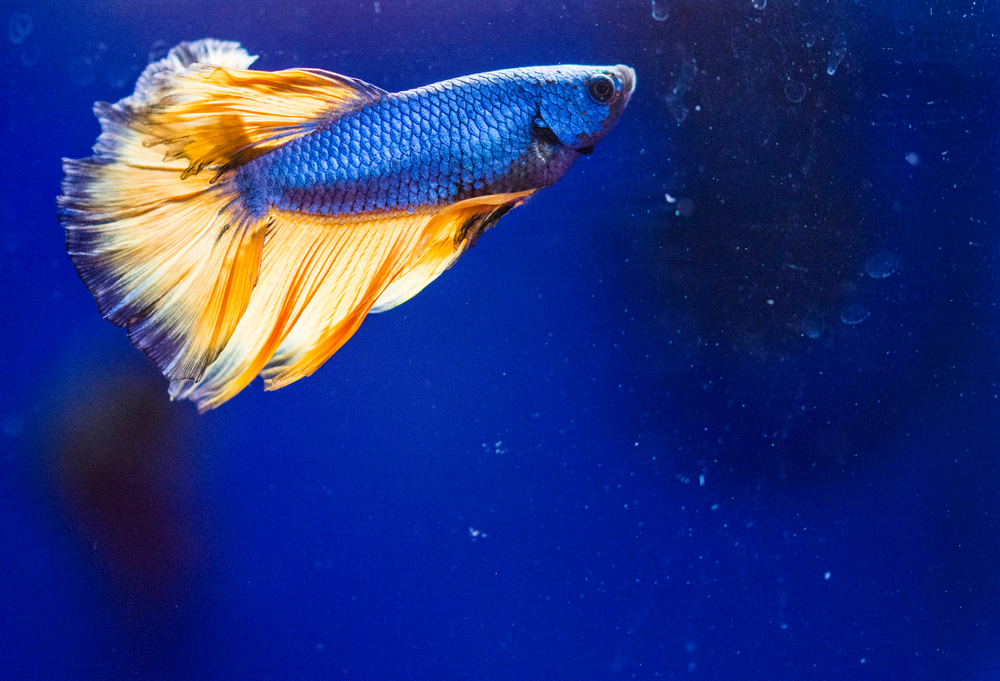
Nutrition and Food for Your Betta
In the wild, betta fish are carnivores that eat insects and larvae. So protein-rich food is the best choice for them. Consider Aqueon's Betta Food, PRO Betta formula, or Betta Food Color Enhancing formula. You can also occasionally give your fish Betta Treats (perhaps as a reward for doing the tricks shown in the section below). Feed your fish once or twice a day, making sure to give an amount that's fully eaten in about two minutes. This prevents them from overfilling their tiny stomachs. Remove any leftover food since excess food can hurt the water quality and promote algae growth. You can use a gravel vacuum to get any food that sank to the bottom.
Betta also love to hunt. So you might want to consider including mosquito larvae, brine shrimp, or bloodworms as part of their meals.
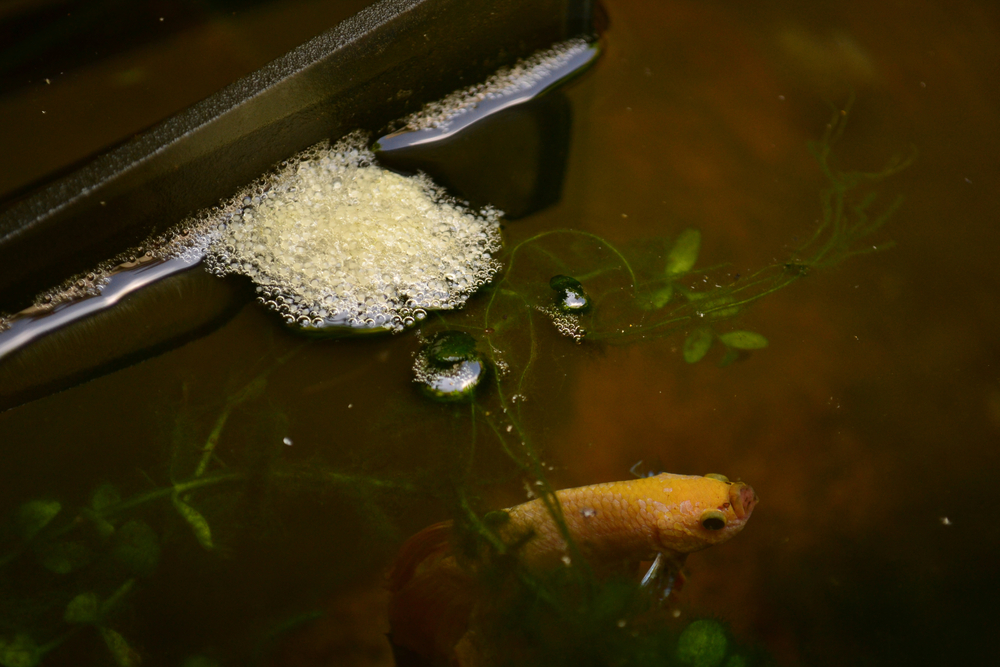
Breeding Betta
You don't have to breed your fish. But if you're interested in doing so, it can be a lot of fun. When it's breeding time, betta males build a bubble nest near the surface to attract a female. As she lays eggs, the male will retrieve them and deposit them in the bubble nest, which he guards until the eggs hatch.
While normally you shouldn't keep two betta fish together in the same tank, you can make an exception to encourage breeding. But the female should only be in the male's tank for about 24 hours until the eggs are released.
So, how do you tell a male betta from a female betta? While you can't always tell a juvenile male from a female, it's easier once they're adults. Male betta fish tend to have longer, flatter bodies, bigger fins, and more brilliant colors than females. Females tend to be shorter and wider and have an "egg spot" between their ventral and anal fins, which male betta typically don't have.
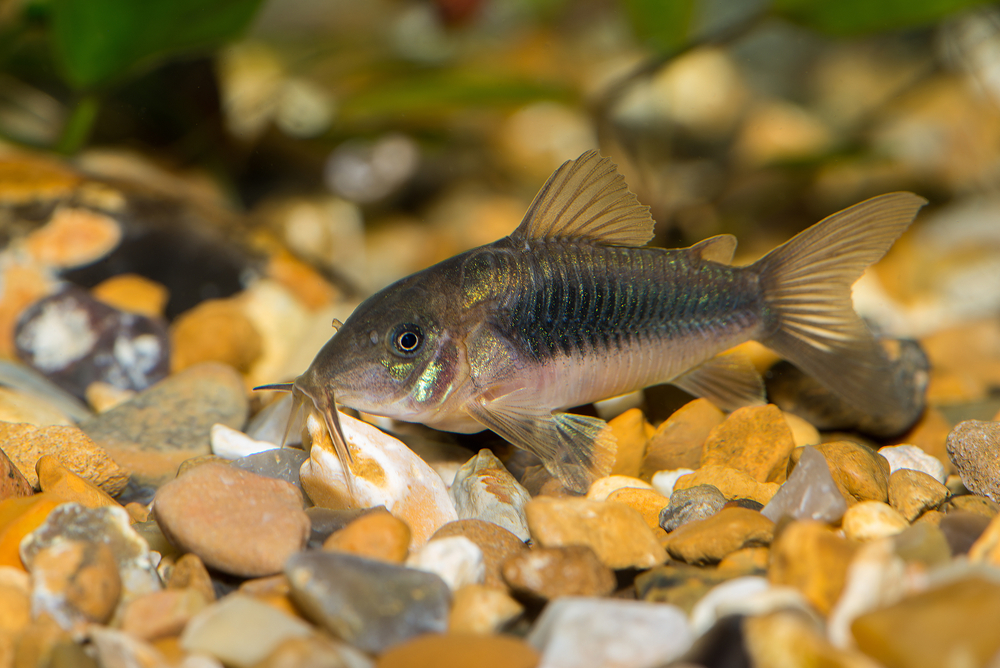
Appropriate Tank Mates
Do you want to keep more than one fish in your tank? Not all fish make great tank mates for betta. Betta can be territorial, so don't add another betta to the tank, especially if they are both males. (Note the exception in the section above for times when you might want to breed your betta fish.)
Instead, look for gentle, bottom-dwelling tank mates, like a kuhli loach, ghost shrimp, snails, African dwarf frogs, or corydoras catfish. Corydoras catfish need to be kept in groups, so make sure your tank is large enough to support them. If you really want to add fish, do your research to find compatible ones, like little Tetras or small Rasboras. Avoid more aggressive fish that might bite your betta's fragile fins. Examples of more aggressive fish that won't play nice with betta include cichlids, gouramis, and tiger barbs.
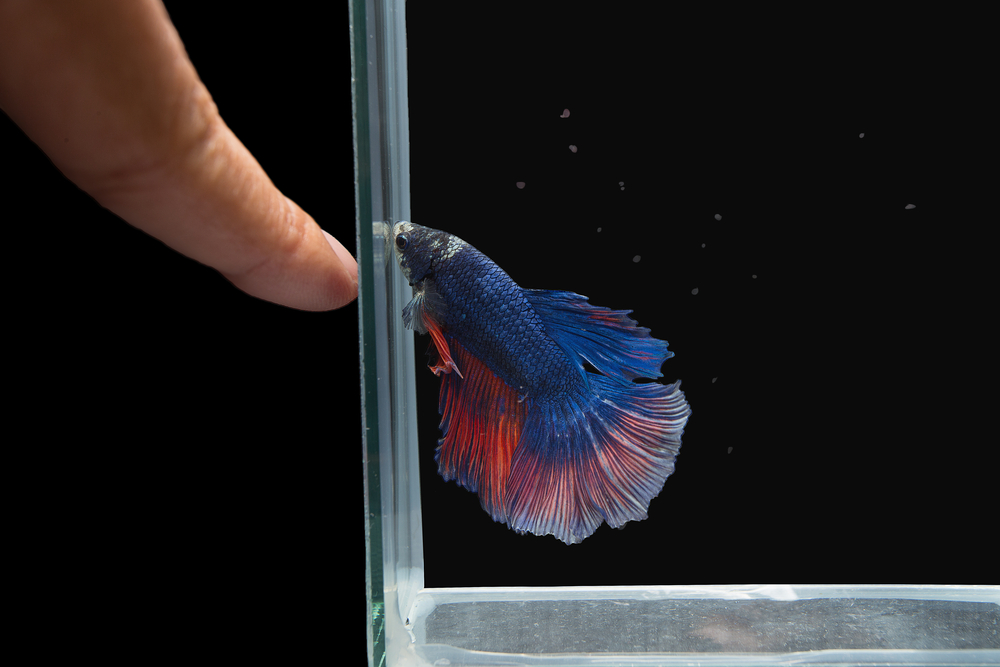
Playing Games with Your Betta
Did you know betta like to play games? You can help your fish stay entertained and happy by playing games and even teaching them tricks. Watching your tiny fish respond to your commands can be fun for both of you!1. Ball Pits
Create a ball pit that your betta can play with using Betta Beads. Your betta will love foraging in the beads for treats and swimming through them.2. Hoops and Treats
You can also create a hoop with a pipe cleaner and encourage your betta to swim through it for a treat.3. Teaching Tricks
Use fish food when teaching your betta tricks (be careful not to overfeed them). Start with getting them to "come," just like your dog! First, put your finger near the surface of the water. As your fish approaches, drop a little food into the water to encourage them. Once your fish regularly responds to your finger, you can try other tricks, like teaching him to leap out of the water for a hand-fed treat.To teach your fish to "jump," start by ensuring that he regularly responds to hand-feeding without hesitation. Then gradually lift the pellet above the surface, a little higher each time, until they leap for the food. (Just don't forget to put the tank lid back on securely when you're done!)
Remember that tricks take time to learn. Spend about five to 10 minutes a day on tricks, so neither of you get bored or frustrated, and don't overfeed your fish.
As you can see, caring for a betta can be so rewarding. Not only is this fish beautiful, but you'll have a gentle companion that can even be taught to do tricks. Setting up the tank may take a little time, but it's well worth the investment.







.png?h=630&iar=0&w=1200&hash=D60FFB2D8BA375CDEFDB52F08CE0E87B)


.png?h=370&iar=0&w=600&hash=CC4AE138370CFAB821A446F2E985DF33)
